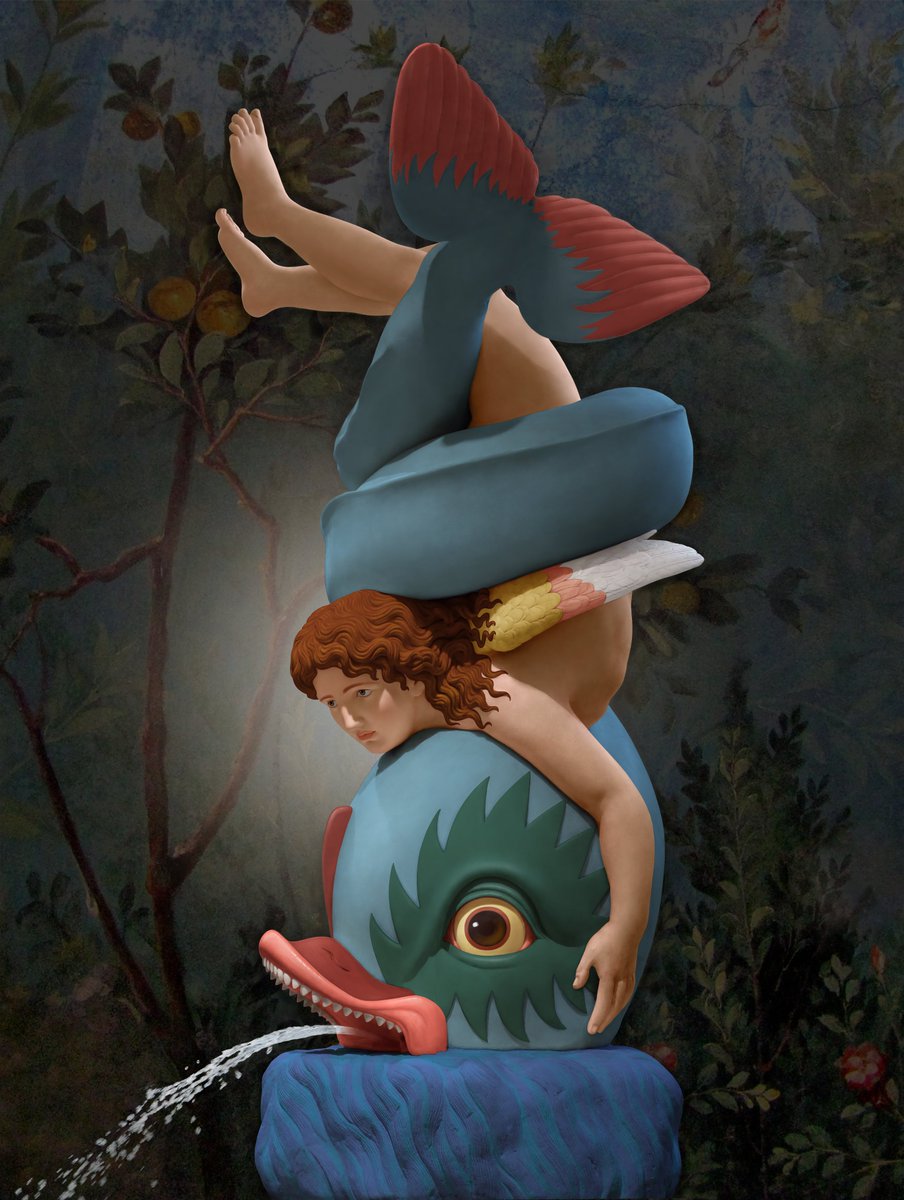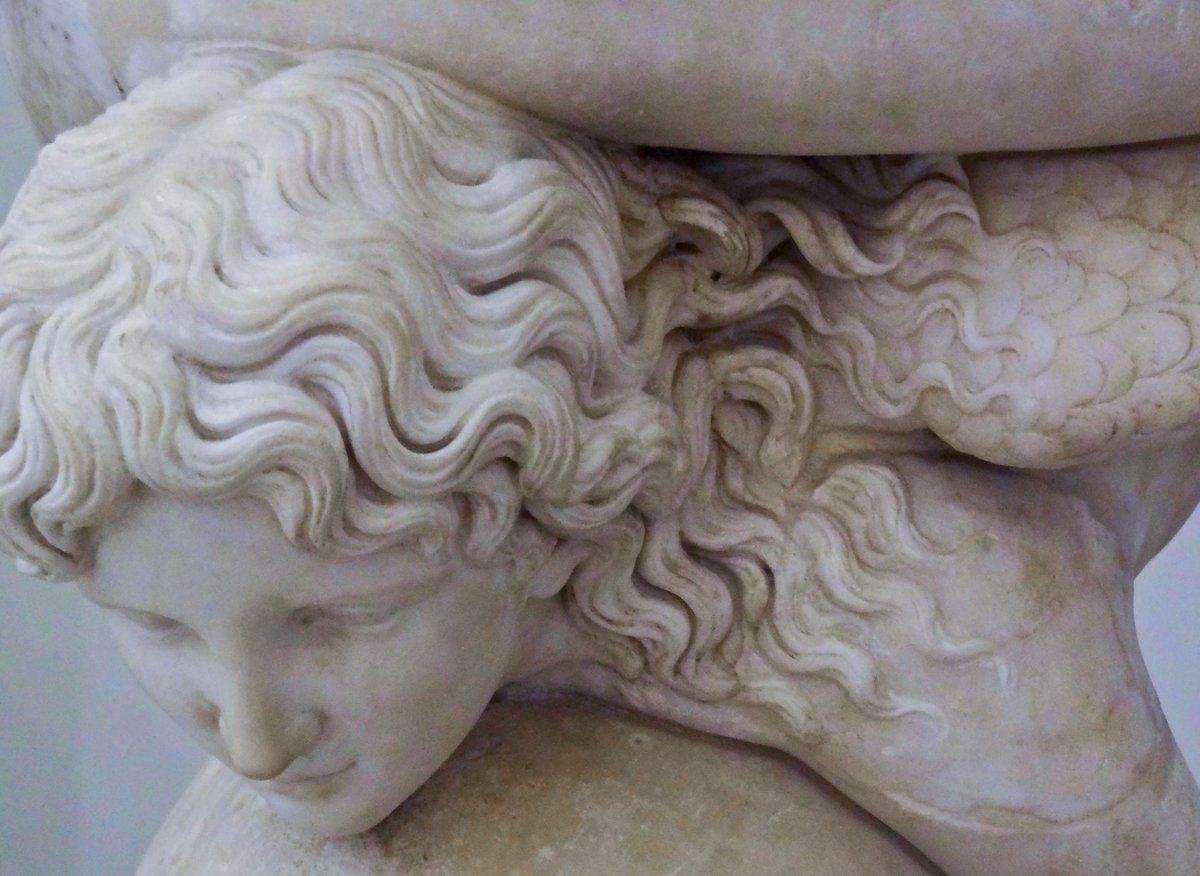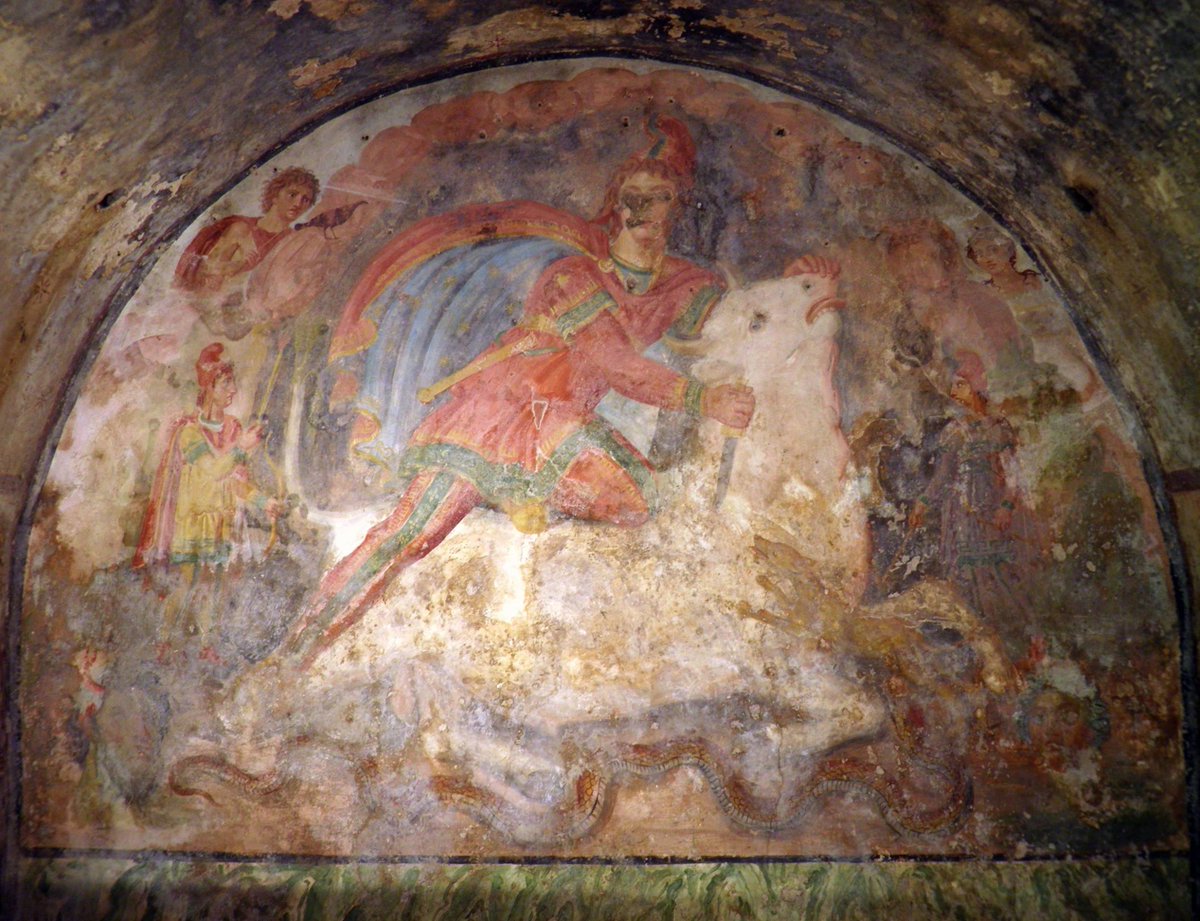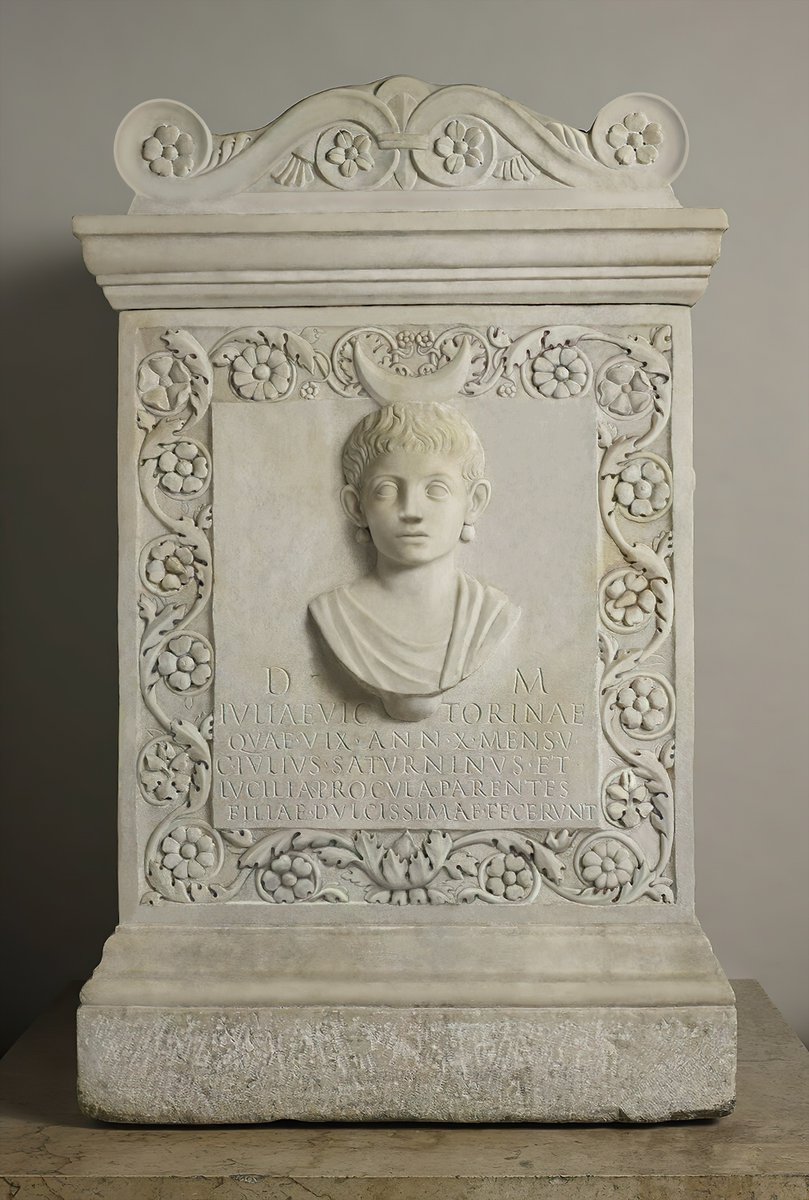One-stop statuette to pray to multiple gods! Silver statuette with gilding, of the Gallo-#Roman goddess Tutela, with a double cornucopia and a mural crown worn as a protector of a city. She holds a patera (libation dish) in her right hand. Let's identify the gods ... 1/ 



The double cornucopia holds the heads of Diana and Apollo, and her upright wings carry the busts of the Dioscurii, Castor and Pollux. Above them is a stand with the busts of several other gods ... 2/ 
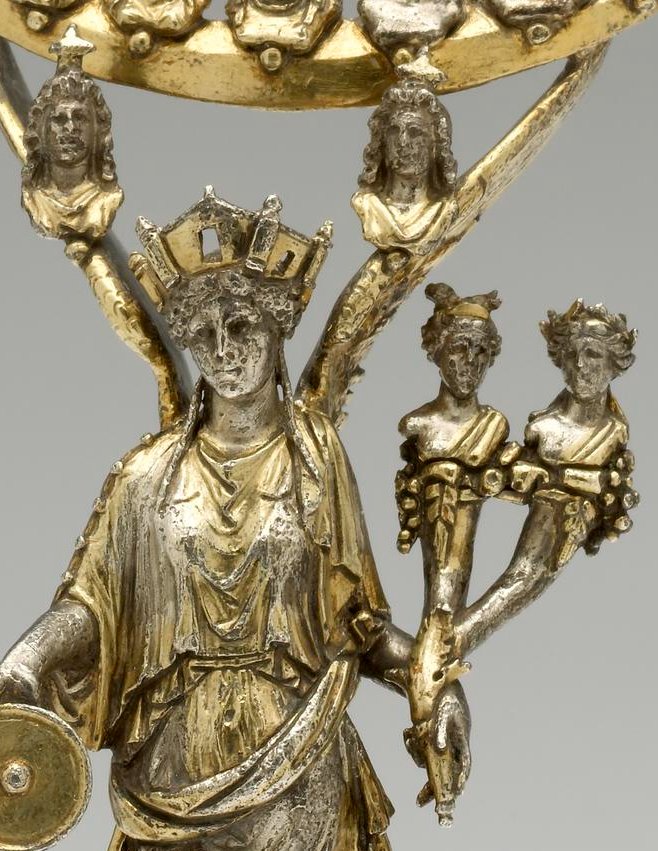
The seven gods at the top of Tutela's wings represent the seven days of the week. Starting with Saturn, the eldest, then Sol (sun), Luna (moon), Mars, Mercury, Jupiter, and Venus. ALT tag for more.
Ca. 150-220 AD. Excavated in Mâcon, France. #BritishMuseum (1824,0424.1). 3/
Ca. 150-220 AD. Excavated in Mâcon, France. #BritishMuseum (1824,0424.1). 3/

Here's a close-up of the small altar at her feet. Note the wreath with ribbons in relief on the front of the altar, and the twisting flame on top.
Even more interesting - to me - is the way that the gilding creates the wide yellow border on the goddess' himation (cloak). 4/
Even more interesting - to me - is the way that the gilding creates the wide yellow border on the goddess' himation (cloak). 4/

• • •
Missing some Tweet in this thread? You can try to
force a refresh

 Read on Twitter
Read on Twitter
















